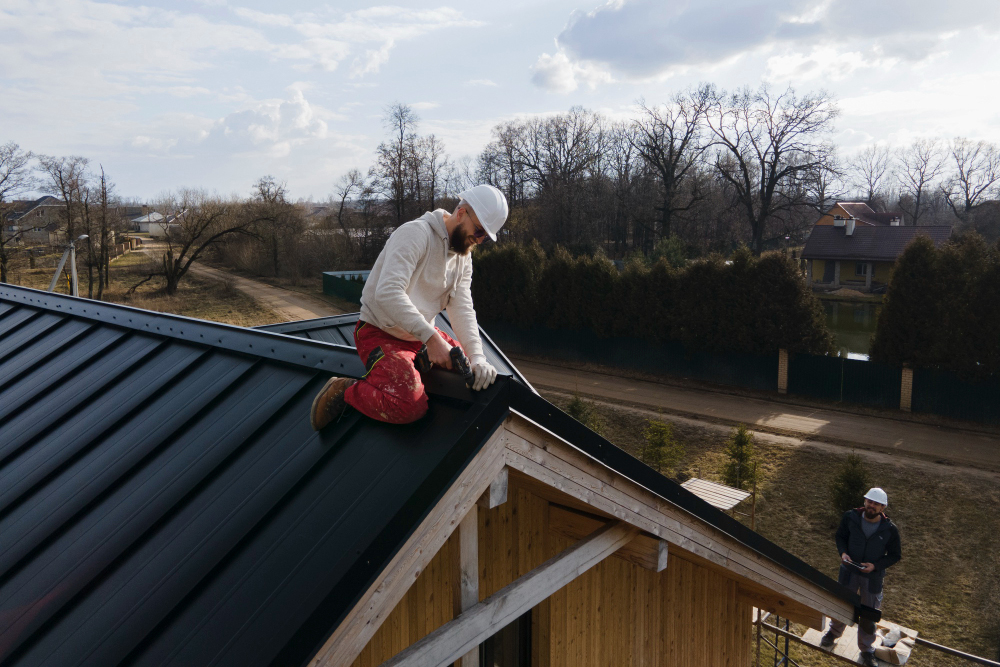 (888) 979-7969
(888) 979-7969
 (888) 979-7969
(888) 979-7969

Dealing with property damage is never an anticipated part of homeownership, but when it does happen — whether it's due to a sudden storm, age, or other unforeseen circumstances — understanding how to handle a home insurance claim can make a significant difference in the stress levels and the recovery process. This comprehensive guide will help walk you through the steps of dealing with a leaking roof, ensuring you're equipped with the knowledge to navigate the insurance claim process with confidence and ease.
The first step when handling a leaking roof is to confirm that what you're experiencing indeed originates from a leak. Sometimes, water intrusion can be a bit more subtle, coming in through walls, windows, or the attic. Properly identifying the source of water damage is crucial, as the cause will dictate the repair process and your approach to filing an insurance claim.
Common signs include water stains on ceilings or walls, peeling paint, mold growth, or a musty smell, especially in the attic. If these are present, it's likely a roof is the culprit:
If water is seeping in during or after a storm, it could be from a damaged roof, which usually requires a claim. However, other leaks may be due to pipe bursts or window sill gaps, which can often be repaired out-of-pocket.
Not all home insurance policies are created equal. It's important to understand the specifics of what your policy covers, especially when it comes to something as critical as a roof leak. Common coverage options include dwelling coverage, which typically protects the structure of your home, and personal property coverage, which protects your belongings.
The type of coverage you have will dictate your financial responsibility towards roof repairs:
Exclusions can vary by insurer and policy, but common ones for roof damage include:
As soon as you discover that you have a leaking roof, it's essential to act quickly to minimize damage and begin the insurance claim process. Here is a detailed step-by-step guide to help you through this challenging situation.
Preventing additional water intrusion is your first line of defense:
Before starting any repairs, gather evidence to support your claim:
Notify your insurance provider as soon as possible:
Get at least two professional estimates for the cost of repairing your roof:
The insurance adjuster will work with you to assess the damage:
If the initial settlement offered by your insurance company is lower than the estimates you've obtained, it's not the final word. You have the right to negotiate a fair payout for the damages to your home.
To strengthen your argument for a larger claim:
Factors that may reduce your final claim payout:
If you're having difficulty negotiating or understanding your claim, consider hiring a public adjuster who can act on your behalf to maximize your claim.
Once you've agreed on a settlement with your insurance company, it's time to initiate the repairs. It's crucial to use this opportunity to not only fix the damage but to also address any underlying problems and fortify your roof against future leaks.
Select a contractor with the skill and experience needed for your roof type:
Consider any upgrades that could prevent future leaks and save you money in the long run:
Keep records of everything related to the repair process:
After the repairs are complete, you may need a reinspection to confirm that the damage has been adequately addressed:
To minimize the chances of dealing with future roof leaks, take these proactive steps:
Understanding how to handle a leaking roof and the ensuing insurance claim is a crucial aspect of responsible homeownership. By being proactive, understanding your policy, and being diligent in the claims process, you can effectively manage this stressful situation while ensuring a swift recovery for your home. If you're looking for an insurance loss adjuster in Orlando, FL for assistance on your home insurance claim, trust Ultra Property Damage to be your professional partner in the process, standing by you every step of the way. With the right knowledge and support, you can turn a home emergency into an opportunity to strengthen and protect your most valuable asset. Contact Ultra Property Damage today for a free consultation.